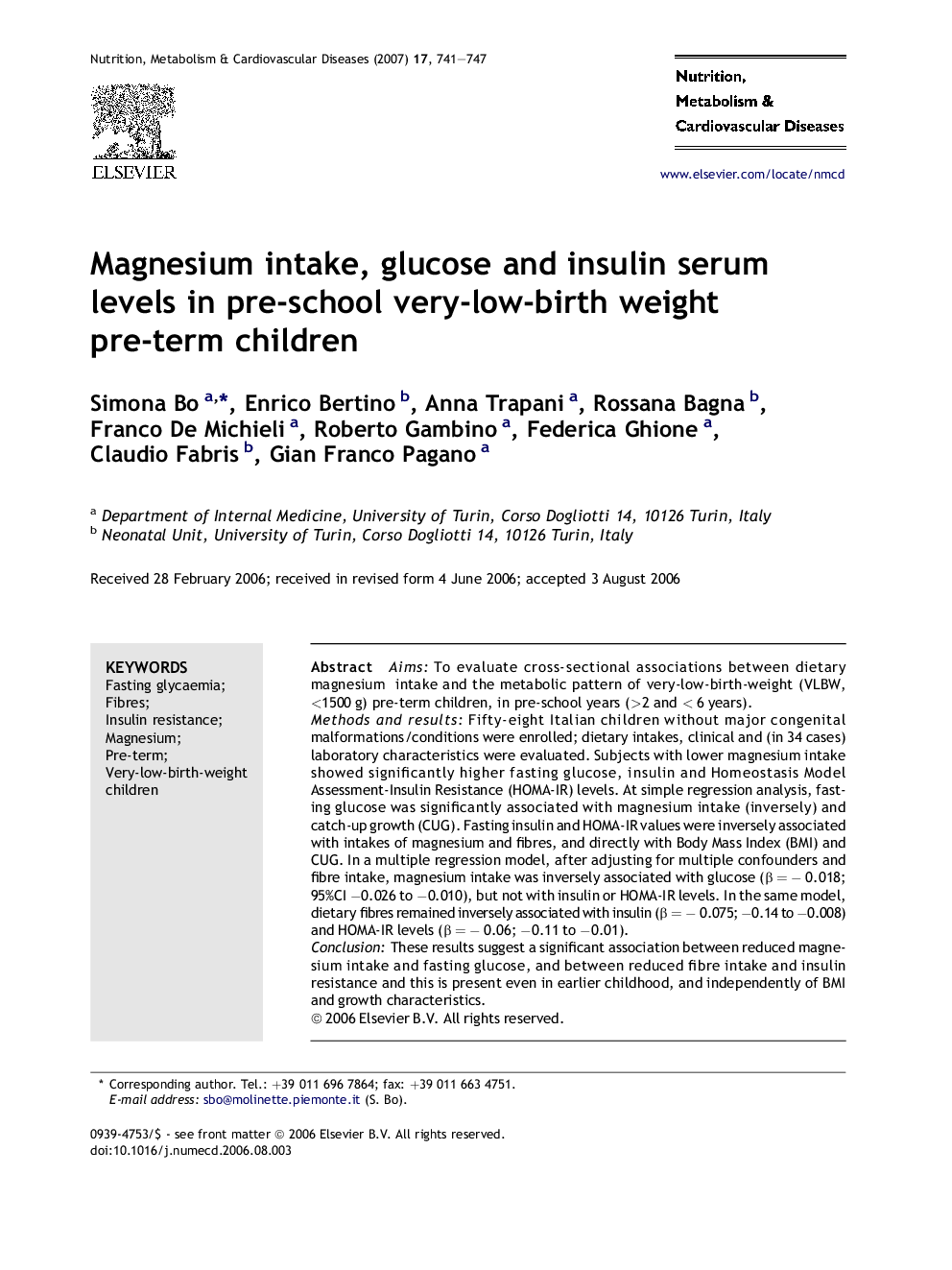| Article ID | Journal | Published Year | Pages | File Type |
|---|---|---|---|---|
| 3003176 | Nutrition, Metabolism and Cardiovascular Diseases | 2007 | 7 Pages |
AimsTo evaluate cross-sectional associations between dietary magnesium intake and the metabolic pattern of very-low-birth-weight (VLBW, <1500 g) pre-term children, in pre-school years (>2 and < 6 years).Methods and resultsFifty-eight Italian children without major congenital malformations/conditions were enrolled; dietary intakes, clinical and (in 34 cases) laboratory characteristics were evaluated. Subjects with lower magnesium intake showed significantly higher fasting glucose, insulin and Homeostasis Model Assessment-Insulin Resistance (HOMA-IR) levels. At simple regression analysis, fasting glucose was significantly associated with magnesium intake (inversely) and catch-up growth (CUG). Fasting insulin and HOMA-IR values were inversely associated with intakes of magnesium and fibres, and directly with Body Mass Index (BMI) and CUG. In a multiple regression model, after adjusting for multiple confounders and fibre intake, magnesium intake was inversely associated with glucose (β = − 0.018; 95%CI −0.026 to −0.010), but not with insulin or HOMA-IR levels. In the same model, dietary fibres remained inversely associated with insulin (β = − 0.075; −0.14 to −0.008) and HOMA-IR levels (β = − 0.06; −0.11 to −0.01).ConclusionThese results suggest a significant association between reduced magnesium intake and fasting glucose, and between reduced fibre intake and insulin resistance and this is present even in earlier childhood, and independently of BMI and growth characteristics.
